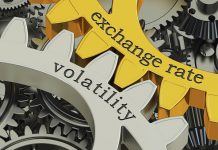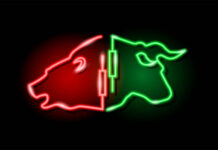In focus this week
Markets are anxiously assessing US President Trump’s next moves in the ongoing “Tariff Turmoil”. At the time of writing, most countries face a 10% duty on most exports and a 25% tariff on cars, steel, aluminium as well as most goods from Canada and Mexico. Meanwhile China faces a 145% tariff, and we expect China to take even stronger measures than the already 125% tariff on US exports to boost domestic demand, potentially lowering the policy rate in the week after easter, but refrain from delivering a devaluation. In total this represents a substantial tightening of fiscal policy in the US – heightening recession risks. US retail sales data on Wednesday will be watched closely as an indicator of a potential slowdown in the economy.
In the euro area, we receive the final March inflation data on Wednesday. We expect the data to confirm the flash release, leading to no market reaction as focus has shifted from inflation towards growth concerns and the trade war.
On Thursday, the ECB is set to cut policy rates by 25bp to 2.25% in line with market pricing. We expect the statement to repeat “monetary policy is becoming meaningfully less restrictive” and Lagarde to highlight downside risks to growth while abstaining from giving any clear guidance on future rate decisions.
Economic and market news
What happened overnight
In the global trade war, US President Trump stated he would be announcing the tariff on semiconductors over the next week. He also remarked, “You have to show a certain flexibility. Nobody should be so rigid”, while also launching a national security trade probe into the semiconductor sector. Meanwhile Chinese President Xi has embarked on his first foreign visit this year to Vietnam, Malaysia and Cambodia. Xi has previously called for greater cooperation with these countries to promote an “equal and orderly multi-polar world”.
What happened over the weekend
In the global trade war, the Trump Administration excluded phones, chipmaking equipment and certain computers from the reciprocal tariffs, offering a brief moment of relief to the US tech sector. However, US commerce secretary Howard Lutnick has since cautioned that although these products are exempt from reciprocal tariffs, they are not excluded from the semiconductor tariffs anticipated before May this year.
In the US, the University of Michigan’s preliminary consumer sentiment survey for April showed a significant decline in consumer sentiment while inflation expectations increased markedly, akin to the release in March. Sentiment declined to 50.8 from 57.0 (cons: 54.5), Current Conditions declined to 56.5 from 63.8 (cons: 61.5) and Expectations declined to 47.2 from 52.6 (cons: 50.8). 1Y inflation expectations increased to 6.7% from 5.0% (cons: 5.2) while ling-term inflation expectations increased to 4.4% from 4.1% (cons: 4.3).
The March PPI data showed a decline in Final Demand to 2.7% y/y from 3.2% y/y. This contrasts consensus estimates, which had anticipated a modest increase to 3.3%, likely due to expectations of producers preparing for tariffs increasing producer costs.
In Sweden, the final inflation data for March released in line with expectations, matching the flash estimates. The CPI was recorded at 0.5% y/y and CPIF came in at 2.3% y/y. Food inflation accelerated, while inflation in clothing and footwear, transport, housing and utilities declined. Overall, annual inflation readings have remained below the Riksbank’s 2% target for 8 consecutive months.
Equities: Equities were generally higher on Friday, with US stocks outperforming Europe as investors rejoiced on tariff exceptions on tech. Exactly what tech products that will be exempted is not clear, but Trump will give more details today. As such, Apple was the standout on Friday. S&P 500 added 1.8% and thereby locking in an average annual equity return in one week – 8%. European equities have been more still, with Stoxx 600 unchanged both on Friday and for the week, though futures point sharply higher when markets open. It should also be noted that Europe is still outperforming US on YTD horizon. The rally appears to linger today, with European futures in catch-up and US futures another 1% higher.
FI&FX: EUR/USD slipped below 1.13 in early trading Friday as Trump’s tariff exemptions on China tempered US recession concerns, providing initial support for the broad USD. With risks of a confidence crisis in USD assets still lingering and several typical market correlations breaking down, the main focus remains on whether easing tariff headlines will be sufficient to stabilise the ongoing sell-off in the USD and Treasuries, as lost credibility may prove difficult to restore. The divergence between US and European rates has been striking during last week’s trading sessions. 10Y Bund yields ended the week close to unchanged at 2.55% while 10Y UST rose more than 50bp to just below 4.50% during Friday’s session. NOK and SEK remain challenged with the global investment environment taking centre stage.











